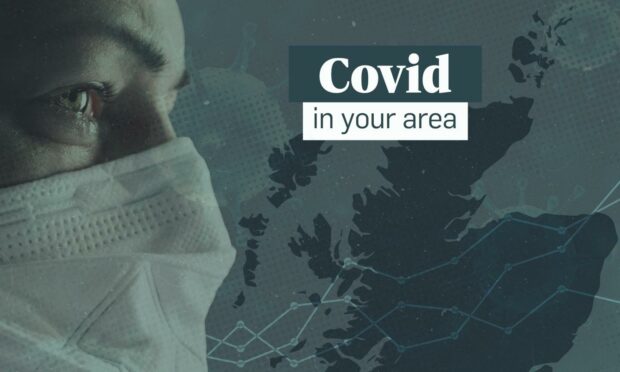The new Covid-19 variant Omicron is the latest to be designated as a variant of concern.
The variant, first discovered in South Africa this month, has already been linked to the UK, with several cases also in Scotland, around Glasgow and Lanarkshire.
We’ve taken a look at how the new variant of concern (VOC) compares to others, and what the Covid-19 situation looks like in your area.
What is a variant of concern?
There has been a number of Covid-19 variants deemed to be of concern.
At this point they are designated under investigation, and can be moved to a designated VOC following a risk assessment with expert committees.
The largest number of cases recorded in Scotland is with the Delta variant, with 112,816 cases sequenced. It was first detected in India, late last year.
After this, the highest number is within the Alpha variant, with 29,129 cases sequenced. It was first detected in the UK, and sequenced in September last year.
In a press briefing this morning (November 29), First Minister Nicola Sturgeon has said that early evidence shows the Omicron variant should continue to be treated with caution, with people asked to work from home where possible, and ensure they are continuing to comply with guidelines including wearing masks and washing hands.
She also said the new Omicron variant could be the “most challenging development in some time”.
Ms Sturgeon said: “The days and weeks ahead will tell all of us much more about this variant and therefore its implications, if there are any implications for our response to the pandemic.
“What we do know at this stage though, in my view, is that we should treat it seriously and that we should continue to act on a precautionary basis at this stage.
“We all hope the emerging understanding of it will reduce rather than increase our level of concern, there is no doubt this presents potentially the most challenging development in the course of the pandemic for quite some time.”
Six cases have so far been discovered in Scotland, including four in Lanarkshire, and two in Greater Glasgow and Clyde.
The map below shows where Omicron has been discovered so far, plus travel restrictions that have been put in place so far as a result of the variant.
Cases
Although case numbers are not quite as high as they were in September, there has been a continued increase in the number of people testing positive for Covid-19 in the north-east and Highlands in recent months.
From March 7 2020 to November 26 2020, the NHS Grampian health board area has recorded 55,801 positive Covid-19 cases, while in the same period, NHS Highland has seen 27,135.
Hospitalisations
As cases have been rising, hospitalisations have also been increasing as a result of coronavirus.
In recent months, NHS Grampian has seen a rise in both hospitalisations as well as the number of people who are currently in its ICU department.
On multiple days this month, there has been 11 people in ICU. The last peak was in September, where there was 13 people in ICU on September 19 2021.
On November 26, there was 91 people hospitalised, the highest number there has been since January 29, where there was 101 people in hospital. There was also 91 people hospitalised on November 3.
In the Highlands, there has been less than five people in ICU for the past several months, and as a result data has been suppressed.
Although hospitalisations have been increasing in the past few months they have not reached levels as high as some other local authorities.
The number of hospitalisations in the NHS Highland health board area peaked most recently on November 18 with 36 people admitted.
Deaths
Although cases and hospitalisations have been rising, there has not been the same rise in deaths from Covid-19 as in previous months where cases were high- such as in January last year.
The most recent peak in deaths was on the week beginning September 20 for Grampian, where there was 13 deaths recorded in the week. For Highlands, this was on week beginning November 1, with 10 deaths recorded in the week.
